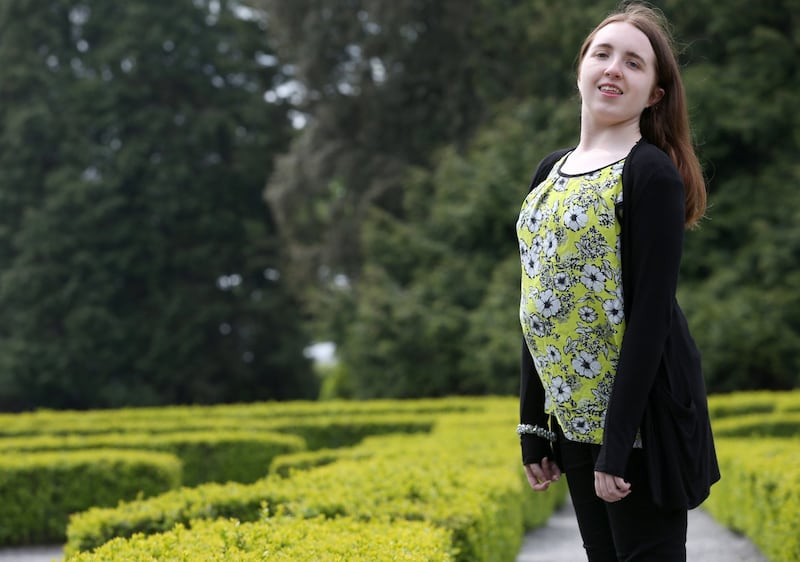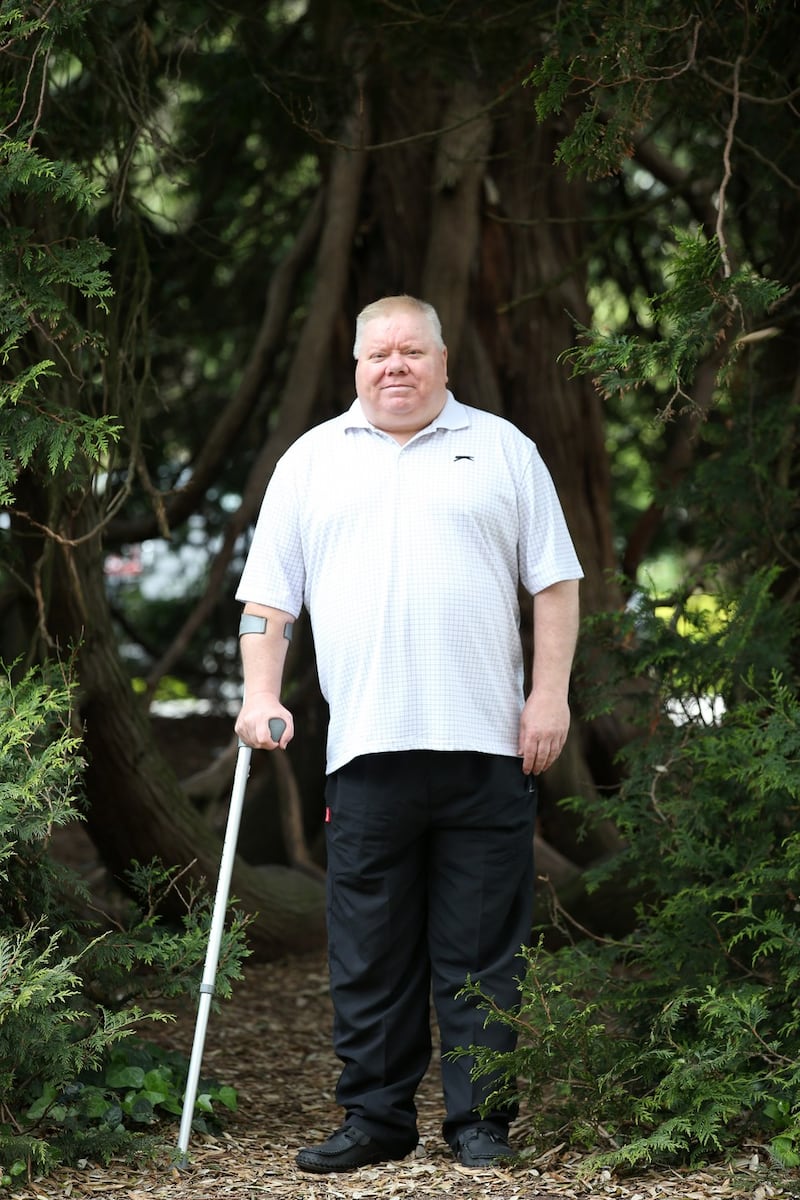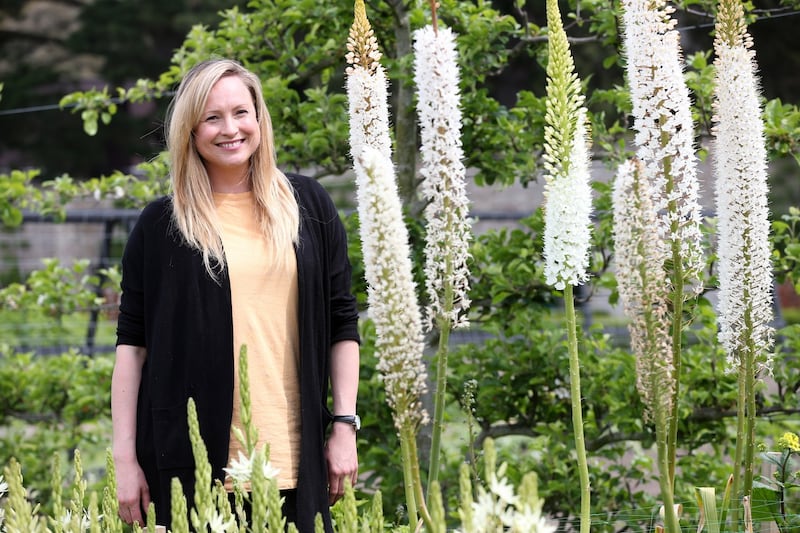Years ago, Joan Carty and her family loved spending their weekends making the most of Ireland’s coastline. “We’d have sailed, kayaked, and like most people spent the summers on the cold, windy beaches of Wexford,” she smiles. “A big part of that was completely taken from me.”
A road traffic accident 30 years ago, when she was 21, changed the course of her life, and that of her family. The crash resulted in an injury that left Carty confined to a wheelchair.
As it happens, she had more knowledge than most about the challenges of being a wheelchair user at the time, as she had worked as a healthcare assistant with people with intellectual disabilities.
'I have a four-year-old boy and I'd love to introduce him to the sea myself, rather than sending him off with my partner'
“Still, the day-to-day challenges of using a wheelchair never really hit me,” she admits. “I remember the shock I felt on a daily basis trying to access various places. Unless you’re really affected by it in some way, then it’s not really on people’s radar.”
In Ireland, we are particularly proud of our outdoor amenities. In terms of beaches, parkways, forests and gardens, we boast a true embarrassment of riches. Similarly, we pay plenty of lip service to the conceit that when it comes to mobility, accessibility and inclusion, we as a society have come a long way.
But talk to those with mobility issues about their lived experience with Ireland’s great outdoors – much of which is rugged and remote – and you get a very different view.
Work to be done
A vast swathe of the population (and it is vast; around 643,000 Irish citizens have a disability, a significant proportion of whom have mobility issues) only get to enjoy Ireland’s parklands, forests, beaches, parks and waterways at a remove.
“Sometimes it can be as simple as the entrance to a park having a very tight turnstile that can be quite difficult to navigate,” Carty explains. “In a lot of cases, uneven surfaces, while it is part and parcel of being in the great outdoors, can cause a major problem. Sometimes, even something as simple as a picnic table made up of a table and bench, means there’s no room for a person with a wheelchair to sit in tight with the people they’re with – they always have to sit at the side.
“There has been some headway made in the last couple of years; for instance they’ve introduced wheelchair buggies at some beaches. But they’re not for everyone – firstly, you need to be able to get transferred into one, and then you’re waiting on someone to push you. It’s a major step forward, but there’s a lot of work to do yet. I have a four-year-old boy and I’d love to introduce him to the sea myself, rather than sending him off with my partner.”

People with mobility issues are more than used to planning their excursions well in advance, but the outdoors creates even more logistical challenges.
“You can ring a venue or hotel to see if it’s accessible, but there’s no-one to ring if you’re going to the beach or the woods,” says Carty, who now works as a National Advocacy Officer for the Irish Wheelchair Association. “Do you take the chance and arrive there, or do you just not bother anymore?
“On numerous occasions, we’d be out for a drive, or we’d go to a park and realise we couldn’t go down that walkway or get into that playground, so it’s a case of everyone getting back in the car, or you’d sit in the car for an hour while everyone else goes off.”
‘It was embarrassing’
An accessibly space doesn’t just mean being wheelchair-friendly: 23-year-old Dubliner Ali Molloy was diagnosed with dyspraxia, a condition that affects spatial awareness.
“I’ve loved going to the Botanic Gardens [in Glasnevin] my whole life, yet towards the end there are a few steps, that because of my dyspraxia affects my balance, and that would be one of my big challenges,” she explains.
Clontarf native Kayleigh McKevitt (24) has been a wheelchair user her whole life. She affirms that even the most meticulously planned day trip can go from a positive experience to a negative one in an instant.
“I’d been to the park a couple of years ago, and my dad and uncle had to get the chair down the steps,” she recalls. “It was embarrassing, and it highlights the fact that I have a disability. When it comes to going somewhere with friends or family members I tend not to go, as I don’t want to be a nuisance.”
In Ireland, our adventure and outdoor activities are a major tourist attraction. James Carolan (59) from Ballyfermot notes that as a keen fisherman for the Bluebell Anglers, it’s a hobby he can enjoy with relative ease.

“You name it, I’ve been there – Longford, Waterford, Wexford,” he says. “Most of the fishing places have wheelchair access.
“The museums in town can be a bit restrictive for me, though,” he adds. “We went on holiday to Galway, and access in a lot of places was totally bad. There were a lot of hills and steps, which are no good to me.”
Mary Lynch, who was diagnosed with multiple sclerosis 30 years ago, faces similar obstacles. “I’ve been to Cushla and Tramore, and the likes of Pebble Beach has no access for wheelchairs. It would be lovely to get down to the water at the beach, but there’s no real way that you can.”
Some other popular attractions, McKevitt notes, are more inclusive than others. The Share Discovery Village, an adventure park in Enniskillen, has excellent access, meaning that she could finally try her hand at kayaking, rock climbing and canoeing.
I didn't want to create something chunky and utilitarian that would work for one group. The garden is an inclusive space for everyone
“It was a really exciting experience and brand new, and proves that with the right level of assistance and support, you can do most things,” she says.
“I was also at the Japanese Gardens [in Kildare] and a lot of it is very wheelchair accessible. Somewhere like the Phoenix Park has a lane on the road for bikes, but a pathway for wheelchair users would be great as the [pedestrian] path is uneven.
“In Ireland, we are moving in very slow steps towards a fully accessible society,” she adds. “If a bar puts a disabled bathroom in its space, it’s almost like a box-ticking exercise. They should get two people with different disabilities in to check and use them before they sign off on them.
“Still, we are moving in the right direction – we don’t want it to be a mad obvious thing, like ‘this is the wheelchair section and this is the able-bodied section’. We know we are slightly different, but we don’t want that drawn attention to.”
Carty adds: “Until such a time where people with mobility issues are freely able to move through the countryside and villages, only then will they become ‘real’ members of the community and society, and be seen as exactly the same as everyone, just going about their daily lives.”

Garden development
One popular attraction is seeking to raise awareness of the challenges faced by people with mobility issues – including wheelchair users, parents with buggies and those using walking aids – hoping to enjoy the great outdoors.
Next weekend’s Bloom event in the Phoenix Park features a show-stopping garden, created by landscape designer Leonie Cornelius in collaboration with the Irish Wheelchair Association. Cornelius took on board advice from wheelchair users: that they wanted to enjoy the great outdoors in a space that they could manoeuvre around, without it looking like a visibly wheelchair-friendly space.
“I didn’t want to create something chunky and utilitarian that would work for one group,” she says. “It’s an inclusive space for everyone, without having to label anyone. Very simply, it’s coming from the idea that a wheelchair user or you or me will experience the garden in exactly the same way.
“There is something about wandering aimlessly which makes you feel calm and rejuvenated.
“One thing I have thought a lot about over the course of working with the IWA is that accessibility is a kind of freedom which most of us take for granted. The freedom to explore, to take steps into the unknown without thinking too much and allowing life to lead us into the great unknown.”
McKevitt echoes this sentiment: “It just means you can be present in the moment just as everyone else does, without wondering, ‘will I even be able to get around here?’ ”








